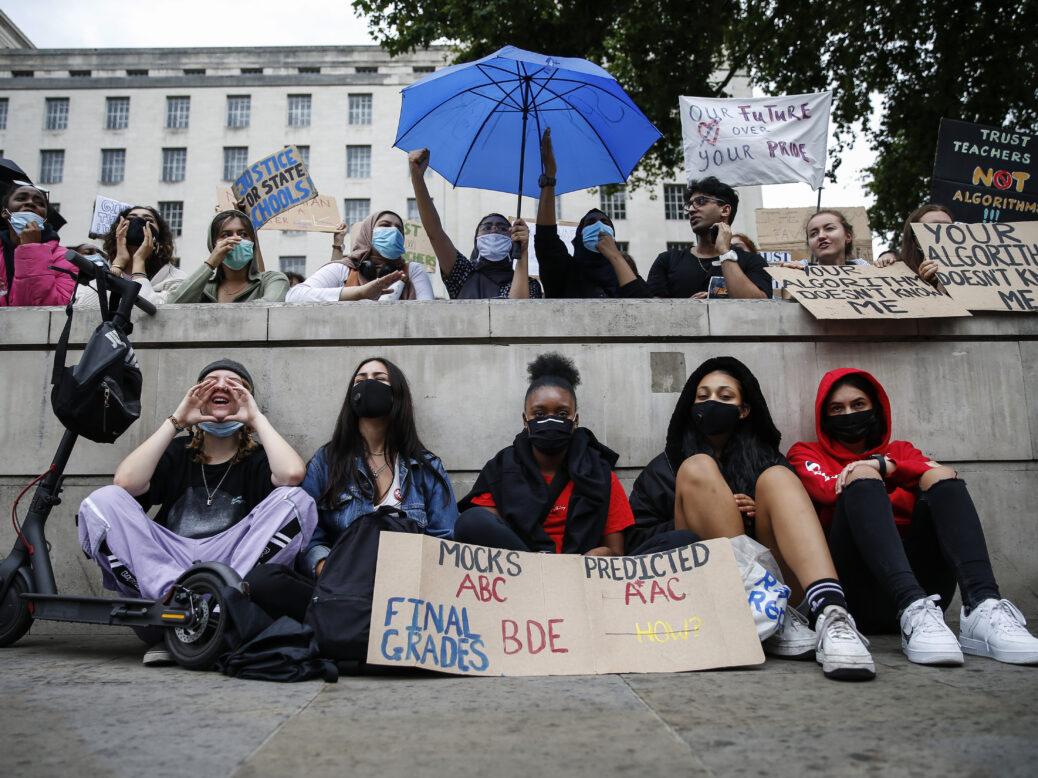
After performing not so much a U-turn as what airline pilots would call an uncontrolled spin, the Education Secretary Gavin Williamson agrees that A-level grades awarded according to teachers’ predictions should stand. Which raises the question: if they are good enough this year, why not always?
The obvious answer is that teachers’ assessments are subjective, to be used only in the emergency created by the cancellation of exams because of the pandemic.
But that presupposes the objectivity of normal A-level grades. In reality, they are awarded by different exam boards across different subjects and different syllabuses after papers have been marked by fallible humans. They are not fixed, verifiable quantities, like the value of pi or the distance from the Earth to the moon.
The notion that an A in maths can be equated to an A in history is preposterous. This year’s now-abandoned “adjustments” in grades, using a mysterious algorithm designed by the exams quango Ofqual, were a desperate attempt to preserve the fiction of objectivity.
That attempt has unravelled. The truth about A-levels is exposed: they amount to little more than an over-elaborate system for allocating university places.
Perhaps government ministers will now seize the opportunity to design a simpler and better system.
Role reversal
The last big row over A-level grades being adjusted was in 2002, when the exam was so radically reformed that it was in effect a new exam. On that occasion, pupils in fee-charging schools suffered most, mainly because their teachers had not understood new coursework requirements. The schools kicked up such a fuss that the then Labour education secretary Estelle Morris eventually resigned.
This year, pupils in state schools and colleges were the main victims of downgrading. Whether Williamson will follow Morris’s example remains to be seen. But it is progress of a sort that, thanks to “Red Wall” voters, state schools can now put as much pressure on Tory ministers as the private schools once put on Labour ministers.
Death tallies
In last week’s New Statesman, Simon Heffer wrote that the Second World War “unified Britain” in a way that Covid-19 “which has killed less than 0.1 per cent of the population, manifestly cannot”.
I suspect he is, like many on the right, too dismissive of coronavirus. Covid-19 has killed 0.06 per cent of the UK population in six months. If it continued killing at the same rate for six years, it would see off 0.72 per cent of us, which is not dramatically less than the 0.94 per cent (counting both civilian and military deaths) killed by the 1939-45 war.
Doff your hat
Years ago, during one of many bouts of cost-cutting that afflicted the Observer over the past half-century, a trustee of the paper confided to me: “If these cuts go ahead, the staff say, the paper simply won’t come out. But they always say that and it still comes out as normal, looking, to this non-journalist, as good as ever.”
I am reminded of this conversation as even the publisher of the Daily Mail, the 21st century’s most consistently successful national paper, plans to cut up to 100 jobs.
The pandemic has played havoc with newspapers. Their revenues are collapsing and they’re produced mostly by journalists working at home. As a fellow hack says: “It’s a logistical miracle. They look normal and they’ve appeared without fail every day of the pandemic. What other industry can make such a claim?”
Journalists don’t expect or deserve mass applause. But perhaps a hat or two could be raised.
Bring back the conference
How many households can meet for dinner in a restaurant? How many people can gather in a garden? Is the infection rate up or down? If up, is that because of more testing? Nobody I talk to knows the answers.
So could we have the regular televised press conferences back – twice a week with just scientific and medical advisers involved, and no ministers?






